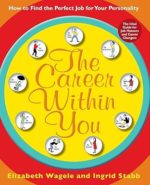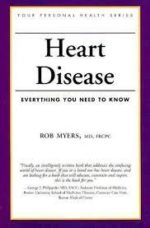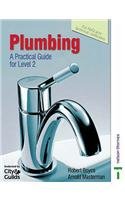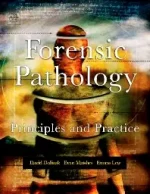-
Wong’s Essentials of Pediatric Nursing
Awarded first place in the 2017 AJN Book of the Year Awards in the Child Health category. Known for its accuracy, evidence-based focus, and engaging writing style, Wong’s Essentials of Pediatric Nursing, 10th Edition has been the #1 title in the pediatric nursing market since it first published in 1980! Thoroughly revised to equip you with the latest research and guidelines for treating children today, it encourages a whole-body approach by beginning with child development and health promotion to better understand the later chapters on specific health problems. A new chapter featuring all systems cancers provides comprehensive information in one place. Nursing Care Plans now incorporate additional case studies to personalize interventions and promote critical thinking.
A developmental approach clearly identifies key tasks, influences, and differences at each stage of a child’s growth to help students provide appropriate, individualized care for each child.
UNIQUE! Critical thinking case studies allow you to test and develop your analytical skills in a variety of clinical situations.
UNIQUE! Quality Patient Outcomes content in Nursing Care Management discussions for major diseases and disorders helps you understand how the care you provide directly impacts patient safety and promotes positive outcomes.
Updated genetic content in the Developmental and Genetic Influences on Children chapter addresses rapidly changing and important information as it relates to children in health and illness.
UNIQUE! Family focus includes a separate chapter on the role of the family in child health, family content throughout the text, and Family-Centered Care boxes that highlight information on patient teaching, home care, and incorporating the family in the child’s care.
UNIQUE! Translating Evidence into Practice boxes focus your attention on the application of research and critical thought processes to support and guide the outcomes of nursing care.
UNIQUE! Atraumatic Care boxes guide you through performing procedures in a caring manner, promoting more positive experiences for children, families, and nurses.
Drug Alerts throughout the text emphasize important drug information and point out potential safety issues.
An emphasis on wellness offers health promotion and injury prevention strategies for each age group.
Community Focus boxes provide resources and guidance on caring for children outside the clinical setting.
Nursing Care Plans, including Nursing Diagnoses, Patient/Family Goals, Nursing Interventions/Rationales, and Expec1ted Outcomes, provide you with a model for planning patient care.
Research Focus boxes help you remain abreast of current studies that impact pediatric nursing today.
Cultural content, integrated throughout the text and highlighted in Cultural Considerations boxes, exposes you to customs and beliefs of different cultures that influence child care, enhancing your ability to provide quality nursing care to ALL children and their families.
Nursing Tips throughout the text offer helpful hints and practical, clinical information of a non-emergency nature.
Nursing Alerts throughout the text provide you with critical information that must be considered in providing care.
UNIQUE! Emergency Treatment boxes serve as a quick reference in critical situations.
Nursing Care Guidelines boxes provide you with clear, step-by-step, detailed instructions for performing specific skills or procedures.
NEW! Updated content throughout, notably methods of measuring competency and outcomes (QSEN and others), ambiguous genitalia, pediatric measurements, guidelines, and standards as defined by the American Academy of Pediatrics, and clear definitions of adolescent and young adult, keeps you up-to-date on important topic areas.
NEW! The Child with Cancer chapter includes all systems cancers for ease of access.
NEW and UPDATED! Case Studies now linked to Nursing Care Plans to personalize interventions, while also providing questions to promote critical thinking. -
Why the Whales Came (Michael Morpurgo)
KShs 695.00Gracie and her friend Daniel have always been warned to stay away from the Birdman and his side of the island. But then they find a message in the sand and discover the Birdman is not who they thought. They build up a lovely friendship with him, but when the children get stranded on Samson Island they don’t know whether to believe the birdman’s story that the island is cursed.
Set against the backdrop of the First World War, in the tradition of Friend or Foe and Private Peaceful Michael Morpurgo brings the emotional reality of conflict to life in a way that is accessible to younger readers. Look out for his other historical adventures including An Eagle in the Snow and Listen to the Moon.
-
Bruce & Borg’s Psychosocial Frames of Reference Theories, Models, and Approaches for Occupation-Based Practice-4th Edition
Psychosocial health is a fundamental element of all human health and well-being. Psychological, emotional, and social factors interact to influence peoples’ occupational lives, in turn influencing psychosocial health. Occupational therapists practicing in contemporary health and social sectors require the knowledge, attitudes and skills to identify and address these psychosocial factors.
The classic and renowned, Bruce & Borg’s Psychosocial Frames of Reference: Theories, Models, and Approaches for Occupation-Based Practice, Fourth Edition by Drs. Terry Krupa, Bonnie Kirsh, and their contributors, examines psychosocial models of practice and their application across a wide range of practice areas in occupational therapy, instead of being singularly focused on practice areas of the needs of people living with identified mental illnesses. Efforts have been made to highlight the relevance of specific models to practice for people with mental illnesses, particularly where the issues experienced by this group have historically been poorly addressed. The authors have also organized models and practice approaches according to the level at which they intervene to create change – occupation, person, environment, and transdisciplinary levels.
As their central domain of concern, the first group of occupational models or approaches have a focus on “what people do” in their daily lives. A second group of models reflect those that intervene at the level of the person. This group understands strengths and problems in occupation as evolving largely from features or qualities of the individual, and the therapeutic processes suggested are directed to changing or building upon these features. A third group of models and approaches focus on the psychosocial context and environment to elicit and enable a positive change in occupation. In some cases, these environmental models expand commonly-held, narrow definitions of “clinical” practice to encourage occupational therapists to engage in population-level practices. Finally, a small group of models of practice are labeled as transdisciplinary. Transdisciplinary models provide ways to develop conceptualizations of psychosocial practice issues, practice language, and approaches that are shared across disciplinary boundaries.
New in the completely updated Fourth Edition:
Contains models and practice approaches that are useful in enabling occupational therapists to address psychosocial concerns relevant to human occupation
Explores the psychological, emotional, and social experiences of humans carried out in context and their linkages to occupational engagement and well-being
Puts forward practice models that focus on person-level aspects of occupation in psychosocial practice
Examines transdisciplinary models and their relationship to psychosocial occupational therapy concepts and practices
Presents well established models and frameworks that focus on population and contextual level factors relevant to psychosocial occupational therapy practice
Discusses occupational therapy intervention approaches flowing from these models, relevant tools and practices, and, where available, the supporting evidence-base
Included with the text are online supplemental materials for faculty use in the classroom.With its updated models and a wide range of practice areas, Bruce & Borg’s Psychosocial Frames of Reference: Theories, Models, and Approaches for Occupation-Based Practice, Fourth Edition is the perfect resource for the occupational therapist student, faculty, and clinician or any practitioner in psychosocial and mental health.
-
The Career Within You: How to Find the Perfect Job for Your Personality
KShs 4,000.00“Wagele and Stabb are great detectives who will help you understand your perfect habitat for all you can bring to the workplace.
—Chip Conley, Founder/CEO, Joie de Vivre Hospitality, and author of PeakEmploying the Enneagram Personality Assessment System, Elizabeth Wagele, author of The Enneagram Made Easy, and career workshop and events organizer Ingrid Stabb can help you discover The Career Within You. Unlike “one-size-fits-all” self-help business books, The Career Within You provides everything you need to fully understand your individual strengths, gifts, needs, and distinct personality traits, and will point you toward a job uniquely tailored to you. “It will free you to become the person you know you really want to be,” says Gil Garcetti, former Los Angeles County District Attorney and Consulting Producer of “The Closer.”
-
The Princess Diaries
KShs 895.00The Fourth novel in the hilarious, bestselling the Princess Diaries Series Mia and Michael are finally an item, but her totally out-of control Grand mere seems to have other plans . . . Just before the happy couple’s first hot date, an unmissable royal engagement turns up. Could it be that Michael doesn’t measure up – and that (please not!) Grandmere’s got someone else in mind for Princess Amelia Mignonette Grimaldi Thermopolis Renaldo? Previously published as Mia Goes Fourth.
-
Marathons: Spectacular Courses Around the World
KShs 2,131.00From Amsterdam and Barcelona to Boston and New York City: the marathon is a runners supreme test. These are the 42 most interesting, beautiful, and unique ones along with all the practical information a runner needs to join in: when theyre run, how to register, how to train for the events, the level of difficulty of each one; and which courses are hottest, coldest, and most spectacular. Some exotic choices include the Kilimanjaro Marathon, for those who can face the altitude; the Great Wall Marathon around Beijing; and the Flying Tortoise on the Galapagos Islands.
-
Heart Disease: Everything You Need to Know (Your Personal Health)
KShs 900.00Widespread and deadly, heart disease is a grim epidemic. Affecting parents, siblings, friends and co-workers, heart disease is so common that it is impossible to remain untouched by it. Heart disease is responsible for more than 37% of all deaths and is the leading cause of death in people over 65.
In Heart Disease, Dr. Rob Myers shows how to take control of the condition. For example, of the 50 million Americans who suffer from high blood pressure — the leading contributor to heart disease — only 35% know they have it. Yet, high blood pressure is easily detectable and usually controllable.
Heart Disease is a practical health guide that simplifies this disease’s biology and physiology and clearly explains the medial concepts and jargon often used by doctors in diagnosis and treatment.
Using detailed tables, sidebars and diagrams, Heart Disease provides comprehensive, accurate, safe and up-to-date information for patients and their families.
-
100 Things Millionaires Do: Little lessons in creating wealth
KShs 2,195.00100 THINGS MILLIONAIRES DO distils all the wisdom and knowledge of a lifetime of starting and selling businesses and coaching hundreds of wealthy leaders into 100 short chapters of advice on building and retaining sustainable wealth.
This is not a get rich quick book. Instead, Nigel explores the habits, tools, techniques and mentality of self-made millionaires and shows you how to begin your own journey to a wealthy future. Mixing simple instructions with activities to get you started, you will find mindsets, habits, and techniques here that will help you get the results you want.
-
Plumbing: A Practical Guide for Level 2
Plumbing: A Practical Guide for Level 2 is an essential handbook for learners, apprentices, and trainees working towards their Level 2 plumbing qualification. Written in clear, accessible language, it covers all the key skills, knowledge, and safety practices required in modern plumbing.
This practical guide takes you step by step through fundamental topics such as pipework systems, hot and cold water supply, sanitation, central heating, and maintenance. With diagrams, worked examples, and real-world case studies, it helps build confidence in both theory and hands-on application.
Whether you’re starting your career in plumbing, refreshing your knowledge, or preparing for assessment, this book provides:
Comprehensive coverage of the Level 2 plumbing curriculum
Practical guidance on tools, techniques, and safe working practices
Clear explanations supported by illustrations and activities
Essential tips for workplace readiness and professional standards
Ideal for students, apprentices, and training centres, this is the go-to resource for mastering the skills and understanding needed to progress in the plumbing trade.
-
Forensic Pathology Principles and Practice
KShs 60,000.00Forensic Pathology is a comprehensive reference that uses a case-oriented format to address, explain and guide the reader through the varied topics encountered by forensic pathologists. Developed in response to a severe void in the literature, the book addresses topics ranging from medicolegal investigation of death to death scene investigation, forensic autopsy, and artifacts of resuscitation as well as complications of medical therapy, forensic osteology, forensic odontology, forensic photography, and death certification. The book includes various types of cases, including sudden natural death, asphyxia, motor vehicle collisions, death in custody, child abuse and elder abuse, acute psychiatric and emotional deaths, and pregnancy. It contains sample descriptions of pathological lesions which serve to aid pathologists in reporting their findings to law enforcement agencies, attorneys, and others involved in investigations of sudden death. The concepts outlined in the text are beautifully illustrated by large, colorful photographs. There are also “Do and Don’t” sections at the end of each chapter that provide guidance for handling the types of cases examined. This work will benefit not only experienced forensic pathologists, but also hospital pathologists who occasionally performs medicolegal autopsies; doctors in training; medical examiners; law enforcement personnel; crime scene investigators; attorneys; and fellows and students of the medical sciences.










